Aktuelle Projekte (nur Englisch)
Cinema Science
The cinema or movie theater is an excellent place to measure chemical emissions from human beings. In modern cinemas, cleaned and filtered outside air pumped into the cinema through gratings under the seats. More...
Amazon
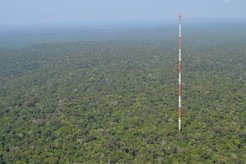
The Amazon rainforest is the largest source region of VOCs to the Earth´s atmosphere. More...
BIOSPHERE
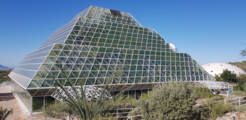
To assist our understanding of Tropical rainforest chemistry we performed a measurement campaign in the BIOSPHERE (https://biosphere2.org/) in collaboration with the University of Arizona and the University of Freiburg. More...
CARIBIC
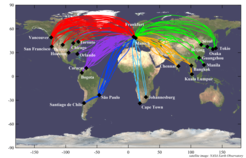
The CARIBIC measurements are made from a specially equipped container flown monthly on-board a commercial airliner. More...
EMME-CARE
The Cyprus Institute is “teaming” with three top European institutions with complementary expertise related to climate and atmospheric environmental research and innovation..more...
HALO
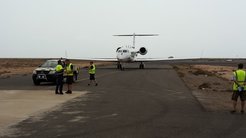
The "High Altitude and Long Range Research Aircraft" (HALO) is the new research aircraft for atmospheric research and earth observation of the German science community (https://www.halo.dlr.de/). More...
Indoor

Since the average person spends most of their life in enclosed spaces (>90% for the average American), the composition of indoor air is an important factor for exposure, and thereby for human health and well-being. More...
Ships
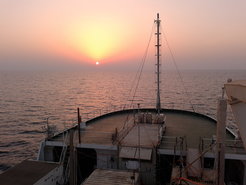
The oceans cover most of our planet´s surface and they can act as both sources and sinks for atmospheric volatile organic compounds. More...
Former Projects
OOMPH

Considering its size and potential importance, the ocean is surprisingly poorly characterised in terms of organic species that play important roles in global atmospheric chemistry. In this project we aim to characterise the nature of organic trace species, in particular organic oxygenates, and the rate of emission from marine biology. The oxidation of of these compounds in air is directly linked to the global ozone and aerosol budgets, while the oxidation pathways in seawater are largely unknown. The research activities will focus on the air-sea-aerosol system and consists of:
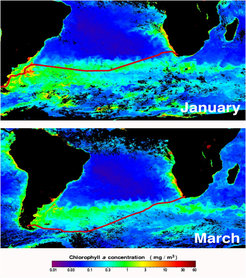
- laboratory experiments on seawater samples and specific phytoplankton types to determine the effect of basic biophysical parameters on the emission of organic species.
- Two shipborne research cruises will be performed to assess both emission and uptake in the open ocean, and contrast the pristine tropical Southern Hemispheric with the more strongly anthropogenically affected Northern Hemisphere.
- Based on both the laboratory and field measurements an interactive atmosphere-ocean chemistry model will be developed, basic to global Earth system simulations.
Link to OOMPH Website
Gabriel
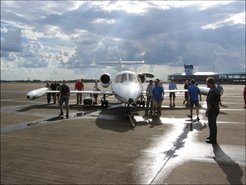
The GABRIEL airborne field study took place in October 2005 (long dry season) over the tropical rainforest of Suriname and French Guyana (3 - 6 °N, 51 - 59 W). The aim of this campaign was to simultaneously characterize VOC emissions over the tropical rainforest and the principal oxidation agent OH radical. Certain biogenic VOCs such as isoprene, monoterpenes, acetone and methanol are strongly emitted by the rainforest. It is important to understand the fluxes of these trace gases as they can impact the local and regional photochemistry.

UTOPIHAN - ACT 2003
The broad objective of the UTOPIHAN-ACT project is to improve our prognostic capabilities regarding the influence of aviation and convectively transported pollution on the photochemistry of the upper troposphere, and the variability, seasonality and abundance of ozone in the upper tropopause region.
METEOR 55 2002
A shipborne experiment using the German research vessel Meteor was conducted across the tropical Atlantic in October-November 2002 to investigate the ocean-atmosphere interactions of organic species. On-board instrumentation enabled measurement of key organic species to be measured in the atmosphere and ocean simultaneously. Additional tracer organic species, including organohalogens, alkanes and CFCs were measured in the atmospheric marine boundary layer only. Between 12th October and 15th November the ship steamed from Curacao (69°W) to Cameroon (9°E) along 10°N. Approximately mid-Atlantic the ship performed two transects (N-S and S-N) crossing the Inter Tropical Conversion Zone (ITCZ) at ca. 5°N and reaching the atmospheric southern hemisphere at the equator. This cruise track permitted measurements as a function of latitude (in both atmospheric hemispheres), of longitude, time of day and for selected species as a function of depth.
MINATROC 2002
The goal of this study is twofold: (1) study of the reaction mechanism and (2) the measurement of the heterogeneous chemical kinetics of the interaction of atmospheric acids (HCl, HNO3) with surrogates (models) of atmospheric dust particles, both in the presence and the absence of other atmospherically relevant gas molecules. All experiments to date have been performed in a Knudsen cell reactor under molecular flow conditions at ambient temperature. The role of adsorbed H2O enabling the solid state reaction has turned out to be of great importance.
MINOS 2001
The objective of the MINOS project is to quantify the main processes involved in the Mediterranean pollution build-up
- Transport of pollution from Europe and from remote sources
- Chemical mechanisms that contribute to the build-up of oxidants and aerosols
- Export of pollutants to the global environment, e.g. towards SE Asia









